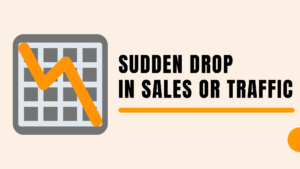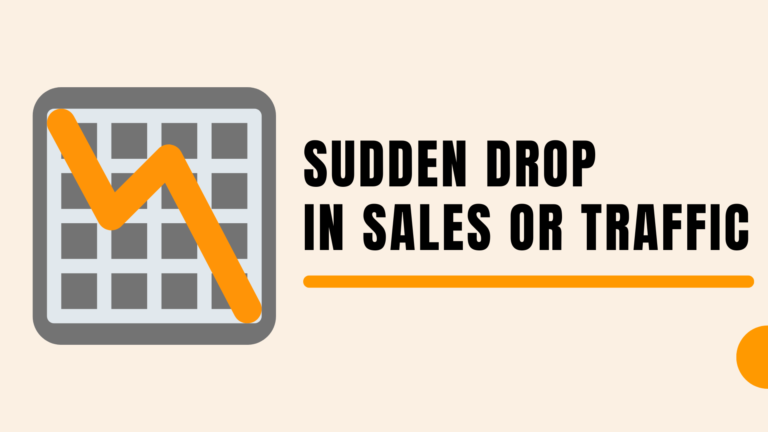Attention Amazon sellers. Improving your product bullet points has never been easier. If you want to boost visibility, highlight key features, or increase conversion rates, this article offers the strategies you need. In this post, you’ll learn how to make your listings stand out and drive more sales.
Amazon’s Product Bullet Points Guidelines 2025
Bullet points should highlight the top five key features and benefits of your product to help customers quickly determine whether it suits their needs.
Do not include:
- Special characters: ™, ®, €, …, †, ‡, o, ¢, £, ¥, ©, ±, ~, â
- Emojis: ☺, ☹, ✅, ❌, etc.
- Invalid info: ASINs, “N/A”, “TBD”, “COPY PENDING”, etc.
- Prohibited claims: eco-friendly, anti-bacterial, made from bamboo/soy, etc.
- Guarantee language: “Full refund”, “Money-back guarantee”, etc.
- Company details or links
- Repetition across bullet points (each must provide unique info)
Writing Guidelines:
- Minimum 3 bullet points (ideally 5)
- Start with a capital letter
- No ending punctuation (no period at the end)
- Use semicolons to separate phrases within a bullet point
- Length: between 10–255 characters per bullet
- Numbers 1–9 should be written in words (e.g., “five sizes”)
- Add a header and colon, e.g., Material: Crafted from durable stainless steel; designed for long-term use.
- Space between digits and units, e.g., “60 ml”, “10 cm”.
- Focus on benefits and usage; explain how the product helps the customer.
- Keep the language natural and clear.
- Avoid brand storytelling; concentrate on product facts.
- Ensure consistency across variants.
- Do not refer to other products under different ASINs.
- Avoid duplication with the title or description; provide supporting information.
- No subjective or unverifiable claims, such as “best quality” or “most durable”.
- Only include awards or surveys if they are verifiable with a date and source.
(Source: Amazon product bullet points requirements)
Why are Effective Bullet Points Important?
Over 2.5 billion products have been authenticated as genuine through Amazon’s Transparency program. There are many products available on Amazon. To make your listings stand out, use bullet points that grab attention immediately.
Shoppers often skim. They scan the first few words of each line and glance down the left side of the screen. Every bullet point needs to grab their attention, quickly share key benefits, and make it easy for shoppers to see why they should buy your product.
Clarity is crucial. Bullet points that are brief and straightforward enable shoppers to make rapid decisions. When your bullet points effectively convey benefits, supported by details, you establish trust and enhance conversions.

How to Optimize Amazon Product Bullet Points
1. Keyword Research
If you want your product to get seen, then start with solid keyword research. Tools like Helium 10, Jungle Scout, and Cerebro let you see what shoppers are searching for and which are most likely to drive conversions.
Primary keywords are essential. They’re high-volume, high-intent phrases that shoppers enter when they’re ready to make a purchase. These should be front and center in your early bullet points, your product title, and your backend search terms.
Long-tail and secondary keywords might attract fewer searches, but they represent very specific shopper intent. They can also help you rank in niche searches with less competition. These keywords are ideal for later bullet points or the product description. You can naturally include them while emphasizing the benefits.
2. Drafting the Bullet Points
As previously mentioned, the most effective bullet points list features and benefits, showing shoppers what they stand to gain. Instead of writing “stainless steel construction,” try this: “Durable stainless steel keeps your drinks at the perfect temperature for hours”. The benefit is immediately clear.
As a side note, focusing on “what’s in it for the customer” also helps you stand out in a sea of similar products. Bullet points highlight convenience, time savings, or problem-solving power and grab attention more than technical specs alone.
Where relevant, use emotional language to connect more effectively. For instance: “Enjoy peace of mind knowing your valuables are protected with our lockable, waterproof design”. The bullet is far more compelling.
SUMMARY: Bullet points are key for showcasing features, using keywords, and improving the customer experience. Focus on the most essential details, like design, unique features, or special uses.
3. Formatting
You’ll need to format your listing to make it easy to scan and visually appealing.
- Capitalize the first three to five words of each bullet.
- Format bullets with a short descriptor (1–2 words) followed by a brief explanation (ideally ≤100 characters). Short, concise bullets prevent information overload and ensure shoppers can digest the benefits in a single glance.
- Use fragments and avoid full sentences.
- Use fragments and skip full sentences.
- Maintain consistency in both format and tone. Use the same style for all bullet points. This will keep your list looking neat and professional, which builds trust and improves readability.
Additionally, avoid jargon unless you are targeting professionals who are familiar with the terms. Just speak in plain, benefit-oriented language that makes it immediately clear why your product is valuable. Keep your bullets clean, engaging, and optimized for conversions.
4. Prioritization
Bullet 1: Your main selling point or what makes your product different—this is the feature or benefit that sets it apart from others. It’s what catches attention right away and gives shoppers a reason to continue reading.
Bullet 2: Emphasize the primary functional advantage. Clearly describe the product’s purpose and how it addresses a shopper’s needs. Concentrate on concrete outcomes or enhancements, allowing the buyer to quickly grasp its value in their everyday life.
Bullet 3: This is your opportunity to leverage emotional or lifestyle connections. Relate your product to an emotion, experience, or aspiration, and demonstrate to customers how it improves their lives.
Bullet 4: Extra features or trust factors. Here you can mention additional benefits, quality indicators, certifications, or social proof. This bullet supports the earlier ones and reduces any hesitation a buyer may have.
Bullet 5: Wraps it up with reassurance or a subtle call to action.
SEO & Keyword Integration Techniques
Currently, Amazon indexes keywords from every part of your listing, but bullet points are especially important because they carry high visibility in search results. Including relevant keywords in a natural way here helps you rank for the searches shoppers are actually typing.
The key point is the strategy for placement. Main keywords should be near the start of your bullet points. However, avoid cramming keywords into every sentence. Keyword stuffing makes bullet points hard to read and can hurt your listing’s effectiveness. Instead, try using related phrases—different words shoppers may use to express the same idea.
Common Mistakes and Solutions
Among frequent errors in Amazon listings, overusing buzzwords or superlatives is among the most common. Words like ultimate or perfect lose impact when repeated too often and can make your listing feel untrustworthy. The solution is to focus on specific benefits. Show shoppers what makes your product valuable.
Always connect features to real-life benefits. Don’t repeat title keywords in your bullet points because it can hurt readability. Indeed, keywords are important, but overusing the title can come across as spammy. Utilize different expressions or associated terms to address search queries while maintaining an engaging and natural writing style.
Ignoring mobile visibility is a huge mistake. Keep bullets concise and scannable, so the key points are visible at a glance.
Finally, avoid writing long or dense paragraphs. Break the information into brief, punchy bullets that each focus on one clear idea. Combine this with smart keyword placement.
Conclusion
Amazon product bullet points optimization is a focus, a simple way to make your listings stand out. Right now, you can boost visibility and conversions by highlighting key features and keeping bullets concise.
If that choice doesn’t sound attractive, you might consider altering the formatting or utilizing persuasive language that emphasizes advantages to draw in customers and increase sales.
FAQs
How many bullet points for Amazon?
The primary guideline and optimal approach for sellers on Amazon is to incorporate 5 bullet points. These bullet points should emphasize the five most important features and advantages of your product to help customers quickly assess whether it meets their requirements.
How to bold Amazon bullet points?
Typically, you cannot format text with bold directly in the standard Amazon Key Product Features (bullet points) section. Instead, you can emphasize the main feature or keyword at the start of the line by capitalizing the first letter to create a comparable visual impact.
How to use ChatGPT for Amazon listing?
ChatGPT can be a helpful tool for creating and optimizing Amazon listings. Refine the copy to match your brand’s unique voice. Ensure the content follows Amazon’s guidelines and that keywords are naturally integrated.
How do I write bullet points?
Bullet points are key for showcasing features, using keywords, and improving the customer experience. Bullet points should highlight the top five key features and benefits of your product to help customers quickly determine whether it suits their needs.
How to write descriptions for Amazon?
The main description should be an engaging narrative that expands on the product’s benefits. Naturally, integrate additional keywords not used in the title or bullet points. If you are Brand Registered, use A+ Content for rich media, images, and enhanced layouts. Do not include price, availability, promotional phrases, or contact info.








